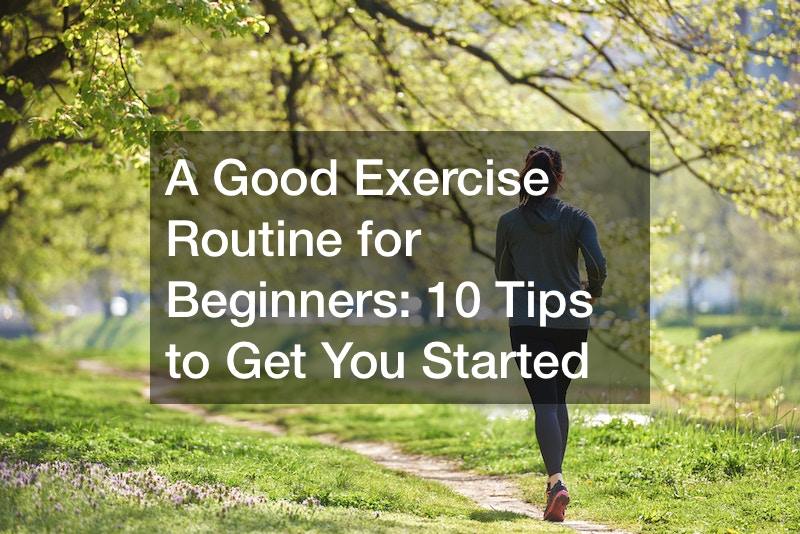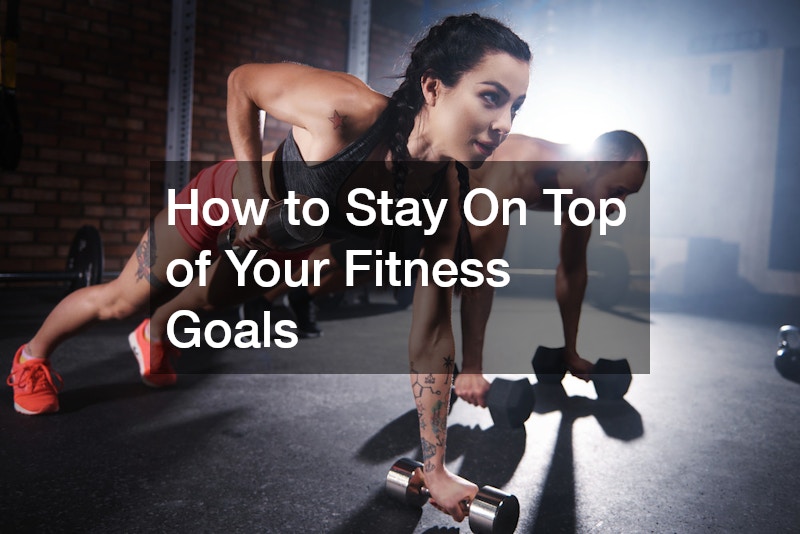
Exercising is one of the best things you can do for your health. You’ll rapidly see and experience the positive effects of regular physical activity on your body and well-being. However, incorporating exercise into your routine requires determination, and maintaining it over time requires discipline. This article will illustrate 10 valuable tips to help establish and maintain a good exercise routine for beginners.
Importance of Exercising
Regular exercise has been proven to enhance your health considerably. Its key advantages include lowering your chance of developing chronic diseases and assisting you in achieving and maintaining healthy body weight and muscle mass.
Additionally, studies have demonstrated that exercise can improve your happiness, sleep, and even your sex life. That’s not all; it may also aid in preserving your energy levels and enhancing mental performance. Before beginning a good exercise routine for beginners, observing these 10 tips is vital.
1. Examine Your Health

Before beginning an exercise program, you must speak with your doctor or a weight loss specialist and have a physical assessment, especially for those new to demanding and vigorous physical activities. It is essential to find out if there are any health issues or diseases that could increase your chance of suffering an injury while exercising.
Additionally, it can assist you in getting the most out of your workout by making it more straightforward to comprehend your limitations and develop an exercise regimen to meet your needs.
2. Create a Plan and Set Reasonable Objectives
Once you’ve adopted a good exercise routine for beginners, try to develop a strategy with attainable objectives. It would be best if you start with a plan of simple exercises and continue upgrading as your level of fitness increases. For instance, if your objective is to complete a five-kilometer run, you might start by creating a schedule incorporating shorter runs.
Increase the distance until you can run the entire five kilometers in a single session once you can complete those short runs. Setting short, attainable goals at the outset will improve your chances of success and keep you motivated. If weight loss is your goal, combining a healthy diet with exercise can help you cost-effectively lose weight compared to a medical weight loss program.
Studies on low-intensity exercise demonstrate that when study subjects engaged in an easy exercise, their bodies burned fat effectively. Another study examined how easy exercises affected cortisol levels. When cortisol levels in the body remain high for extended periods, it is linked to abdominal weight growth. Low-intensity exercises are successful in lowering cortisol levels.
3. Establish a Routine

A crucial step of a good exercise routine for beginners is making it a habit since it becomes easier to maintain the exercise regimen in the long run. It’s crucial to start cautiously and give your body a break occasionally to avoid injuries such as chronic upper back pain due to prolonged strenuous activities.
Making a timetable or exercising at the same time each day are other practical approaches to maintaining and extending your routine. For instance, by scheduling a workout directly after work or first thing in the morning every day, you can develop the habit of exercising. It’s crucial to pick a time that suits you the best.
4. Stay Hydrated
Drinking water throughout the day is vital for maintaining good hydration. As you adopt a good exercise routine for beginners, remember that replenishing fluids during exercise is critical for maintaining good performance, especially when exercising in hot weather. Moreover, hydration after your workout will help you recover and prepare for your next training session.
5. Optimize Your Nutrition

Ensure you consume a healthy diet to complement your workout routine. All meal types are required to preserve good energy levels and get the most out of your training. Carbs are crucial, as they energize your muscles before a workout. They are also vital after exercise to replace glycogen levels and assist with absorbing amino acids into your muscles during recovery.
Regularly consuming healthy fats helps to burn body fat and conserve muscle fuel throughout workouts, making your energy last longer. Additionally, protein promotes muscle recovery after exercise, grows muscular mass, and heals tissue damage which is essential, especially in physical therapy treatment.
6. Reward Yourself
Regular exercisers frequently do so for the benefits it has on their life, including increased energy, improved sleep, and a higher sense of well-being. These, however, are typically long-term benefits. When you first begin an exercise regimen, it’s crucial to reward yourself right away whenever you finish a workout or achieve a new fitness objective. Select a treat that you eagerly await but reserve for right after exercise. It might be as easy as taking a hot bath or enjoying a cup of your favorite coffee.
7. Warm Up
A good exercise routine for beginners also requires one to warm up before working out. Doing so can help prevent injuries and improve your performance. You can start the workout on your outdoor patio with aerobic movements like arm swings, leg kicks, and walking lunges. Alternatively, you might warm up by making easy motions of the exercise you’re about to undertake. For example, walk before you run.
8. Cool Down
Cooling down is also crucial since it helps your body return to its natural state. Taking a few minutes to cool down will enable you to restore regular breathing patterns and potentially lessen the possibility of muscle discomfort. Some cool-down options include mild walking after aerobic exercise or stretching after weight training.
9. Listen to Your Body
Be cautious of your boundaries if you’re not used to working out daily. If you feel pain or discomfort while exercising, stop and relax. Pushing through the pain is not an intelligent choice, as it might cause injury, which may necessitate seeking chiropractic treatment. Also, remember that working out harder and faster is not necessarily better. Taking your time to advance through your fitness program will help you maintain a good exercise routine for beginners and make the most of it.
10. Motivation
The key to keeping motivated and making fitness a habit is to have fun while doing it. Working out as a group or with a friend can push you to keep up your workout habit. It also eliminates the fear of maintaining a good exercise routine for beginners since you are in the company of others to inspire and motivate each other.
Joining a gym, attending a virtual fitness class like yoga or Pilates, getting a personal trainer, or practicing team sports enhance motivation and enjoyment. Furthermore, recording your progress, such as logging your weightlifting levels or noting your running timings, will help keep you motivated to improve your records.
Simple Indoor Exercises To Consider

To burn calories and develop stronger muscles, you don’t require specialized gym equipment or go to sports facilities with an indoor turf floor. When performed at home, a good exercise routine for beginners should begin with setting a short-term goal of finishing three workouts during your first week. You can then progressively increase the number of workout days since the constancy of your program is more crucial than the kind of exercise you choose to do. Here are four indoor exercises to get you going.
1. Squats
You can start performing a dumbbell front squat by holding light or medium dumbbells. Put your hips back, keep your shoulder and feet width apart, bend the knees, and lower yourself to a parallel squat position. If you deviate too much from parallel, your back may arch, which will hurt you.
It’s crucial to perfect your technique since you need good wrist mobility to grasp the dumbbells and strong ankles and shoulders to maintain your balance as you lower yourself into a squat. You can use a box or bench behind you to provide support.
2. Glute Bridge
This exercise is an excellent substitute for the squat if you want to work on your glute muscles. Lie flat on your back and bend your knees to perform this exercise. Your body should be horizontal from your shoulders to your knees by tightening your glutes and lifting your hips. Resume to the previous position after a brief pause, during which the glutes are once more contracted. You can add a barbell or dumbbell across your hips as you get better at the exercise.
3. Push-Ups
Push-ups are fantastic since you can perform them without special equipment. Other modifications might make the workout more challenging or manageable. If you are a newbie, you can perform push-ups while leaning on a wall. As you gain strength, you can perform it while holding your hands lifted in an inclining position while gradually lowering the slope’s height to increase the difficulty.
4. Deadlifts
This exercise has different variations and can be performed with dumbbells, barbells, or kettlebells. Beginners should start by performing deadlifts while holding the dumbbells. This exercise strengthens your back, glutes, core, and hamstrings while also assisting you in practicing hip hinges.
It would help if you held the dumbbells in front of you while standing with your feet and shoulders apart and your knees slightly bent to do a dumbbell deadlift. As you slowly lower your body while maintaining the dumbbells near your shins, keep the shoulders back while avoiding stretching your back and bending your hips.
You should stop when you are parallel to the ground since your hamstrings will feel stretched. Maintain your form as you slowly rise back to the initial position. You can up the dumbbell weight as you get better at this exercise, or you can move on to using kettlebells and barbells.
Simple Outdoor Exercises

The benefits of outdoor exercising include breathing clean air as you work out and taking advantage of your neighborhood park, pool, or nature reserve, which have stress-relieving effects. Below are three essential outdoor exercises to consider.
1. Aqua Jogging and Swimming
Try pool running or aqua jogging if walking for extended periods hurts your joints. The blue belt you need to keep your upper body afloat is available at many public swimming pools. As soon as you are submerged, you stroll without letting your feet touch the water’s surface.
Swimming is also among the best low-impact workout. The ideal condition for joint decompression and elongation is horizontal swimming in an in ground pool, which has the anti-gravity effect of water. Because of the water’s resistance, this is fantastic cardio and strength-building activity.
You can essentially work every muscle in the body by experimenting with various strokes or stretching and relaxing your body muscles on a swimming pool starting block before diving. Swimming has the extra advantage of making you more conscious of your breathing and helping you to regulate it.
2. Walking
Walking is a good exercise routine for beginners since it’s a simple, low-impact, continuous aerobic activity requiring little gear, planning, or preparation. The next time a friend or member of your family calls, take a walk and bring your pet along. You can also listen to your favorite podcast or a walking meditation as you perform this exercise.
3. Tennis
Tennis is a fantastic upper body, core, and cardio exercise, since spending some time on the court will burn many calories. You might choose to participate in a game without a net if your neighboring court needs tennis court repair services. All you need is a tennis racquet, tennis balls, and tennis shoes. To maintain balance while gripping the racket with your dominant hand, strengthen the opposite arm with some strength training.
Implementing a good exercise routine for beginners might seem challenging, but the tips and simple exercises mentioned above will help you maintain a fitness regimen in the long term. The idea is to start cautiously, build up your fitness level, and let your body rest from time to time to help prevent injuries. You can contact us to receive additional information on the best exercise routines from our team of fitness experts who are always ready to be of help.



